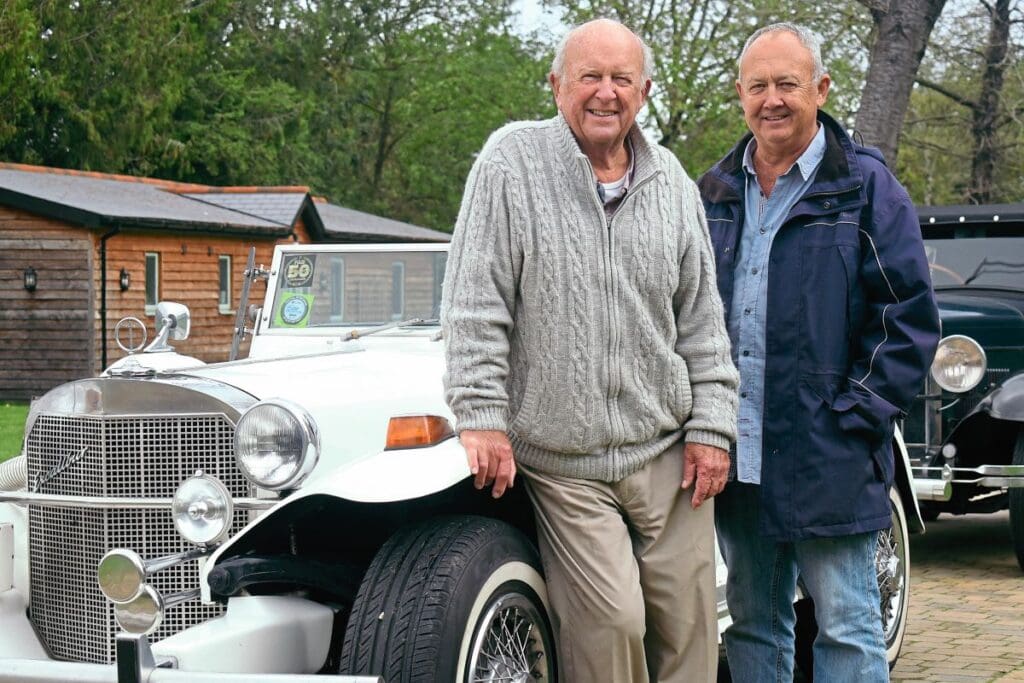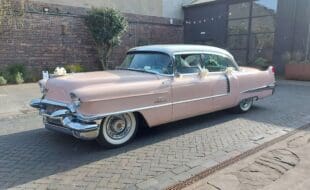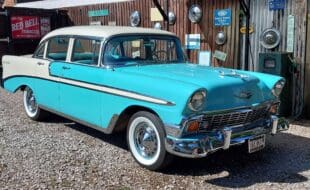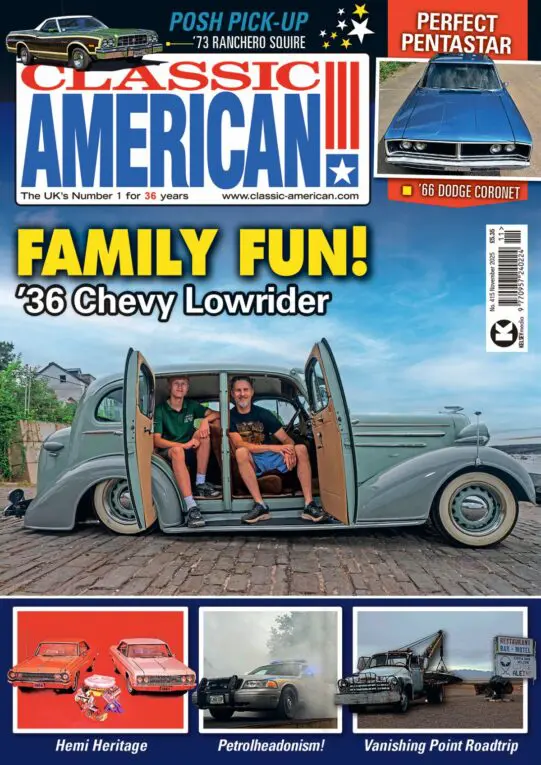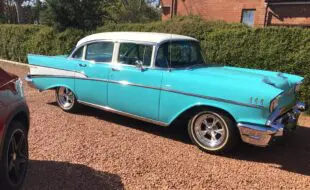Excaliburs were expensive showpieces for the stars. Few, if any, would have sold to people in serious-minded professions. Aircraft engineer Joe Irwin isn’t your typical Excalibur enthusiast, but this one just fell into his hands after spending 13 years with an eccentric sheikh…
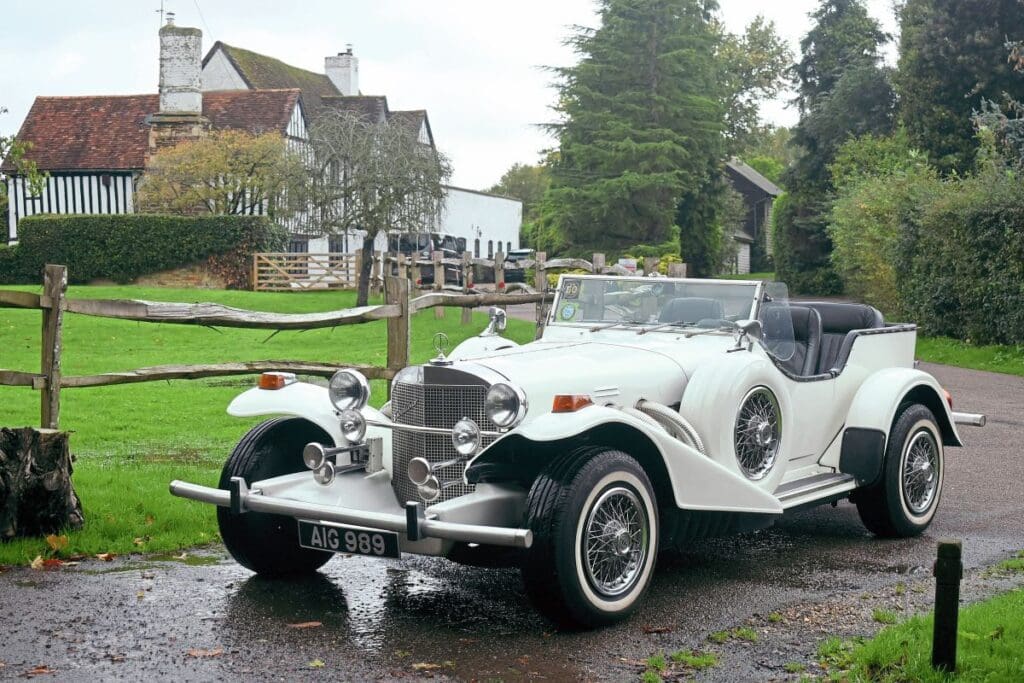
Words and photography: Zack Stiling
One might suppose that anyone with a collection of four American cars has probably been into the hobby a long time, but where Joseph Irwin is concerned, that’s not the case at all.
The fact is, he only started collecting two years ago, and quite unwittingly at that. The car that started it all was this 1977 Excalibur SS Phaeton Series III.
Enjoy more Classic American reading in the monthly magazine.
Click here to subscribe & save.
The Excalibur was a fascinating creation which embodied a sort of microcosm of American car culture – that of celebrity. It introduced the concept of a neo-classic, a car which combined styling cues from elegant prewar designs with the convenience and luxury of up-to-date technology.
Its originator was industrial designer Brooks Stevens, who contributed so much to the stylish aesthetic of mid-century America. Stevens’ pen had a hand in shaping certain postwar Harley-Davidsons, the Jeepster and Jeep Wagoneer, and the 1962 Studebaker Gran Turismo Hawk, but despite all those achievements, the Excalibur remains the design for which he is best known, and it was quite at odds with the streamlined future he had hitherto espoused.
Away from the office, Stevens was an enthusiast and collected historic cars which, from 1959, he displayed in the Brooks Stevens Automotive Museum.
The first Excaliburs were three lightweight, road-going sports racing cars he built in 1952, which raced extensively with the Sports Car Club of America, but as a manufacturer his story begins in 1963. He was coming to the end of a four-year contract as design consultant for Studebaker and was disappointed with what he regarded as a dull range for 1964.
He maintained they needed a showstopper to dazzle the public and, with sons David and William, devised the prototype Excalibur, using a 109in-wheelbase Lark Daytona chassis with a supercharged Avanti V8, for their stand. The late 1920s SS and SSK Mercedes-Benzes were one of Stevens’ favourite designs, and the body was essentially a straightforward SSK copy. Studebaker’s risk-averse head office was not impressed, but the car was displayed separately at the New York Auto Show and was a hit.
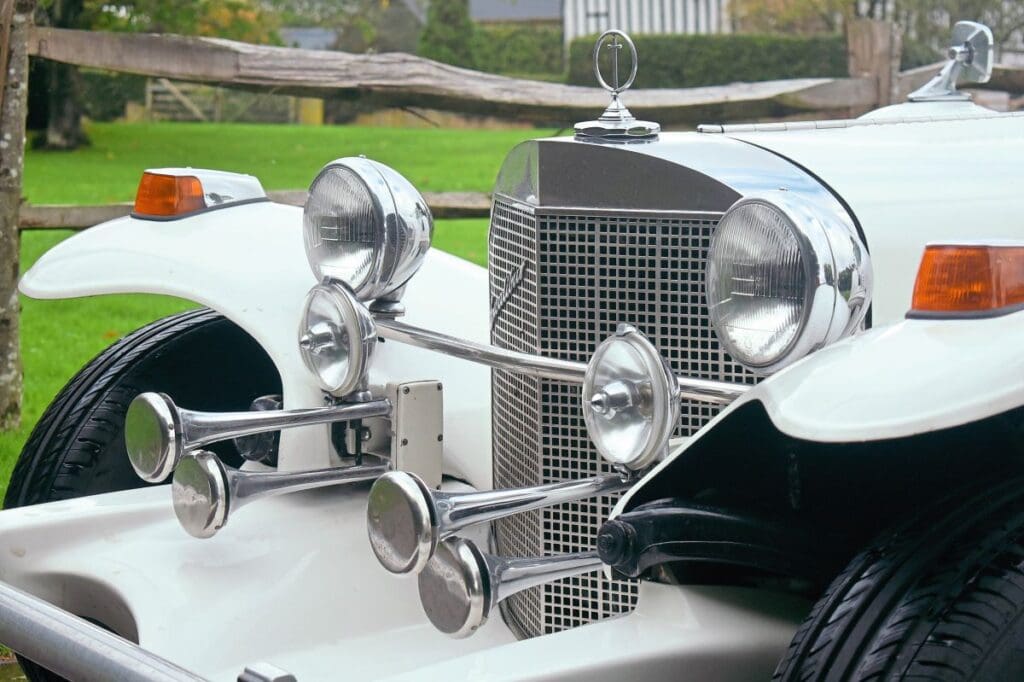
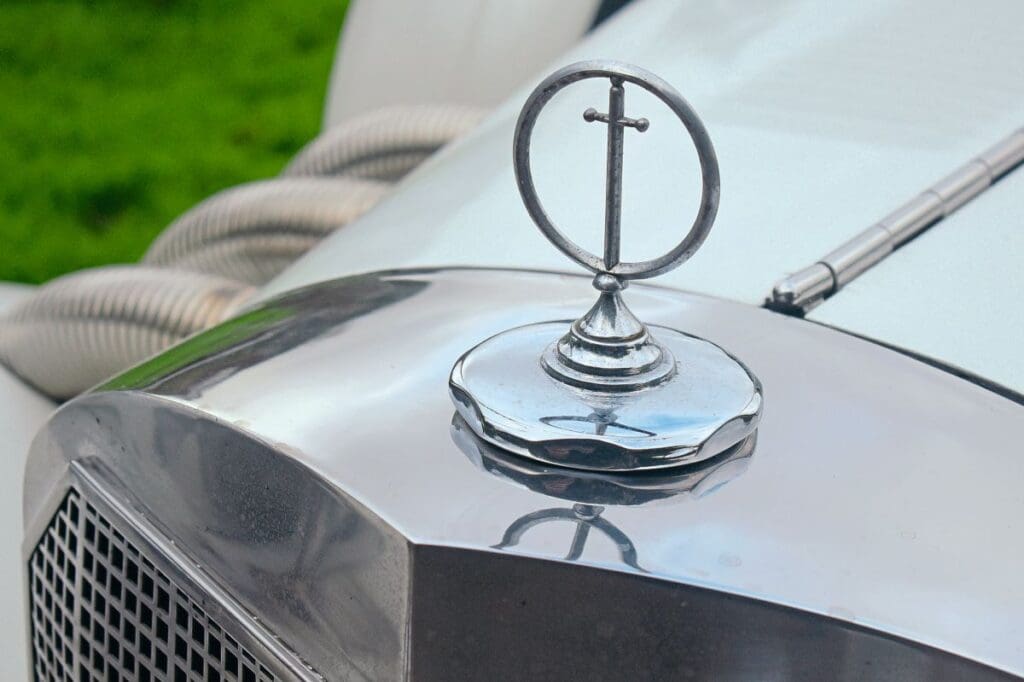
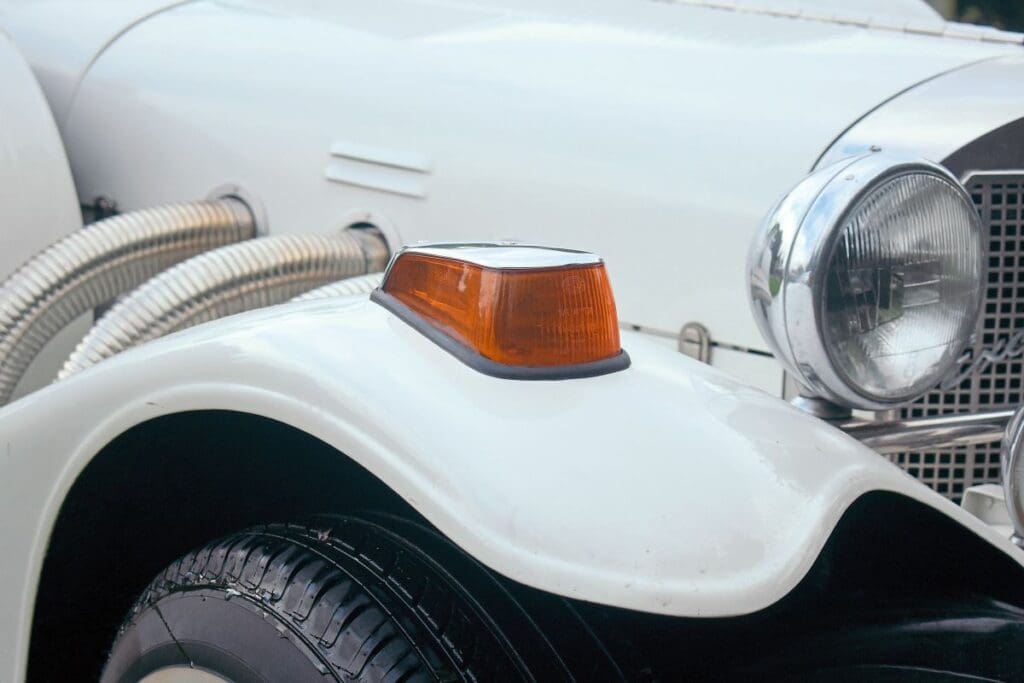
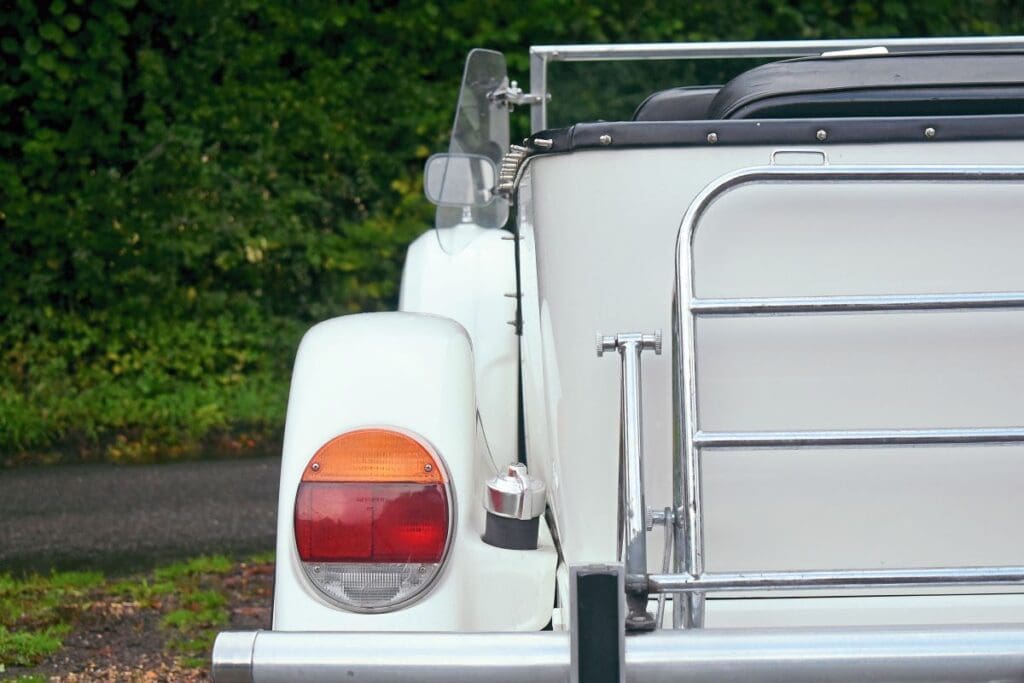
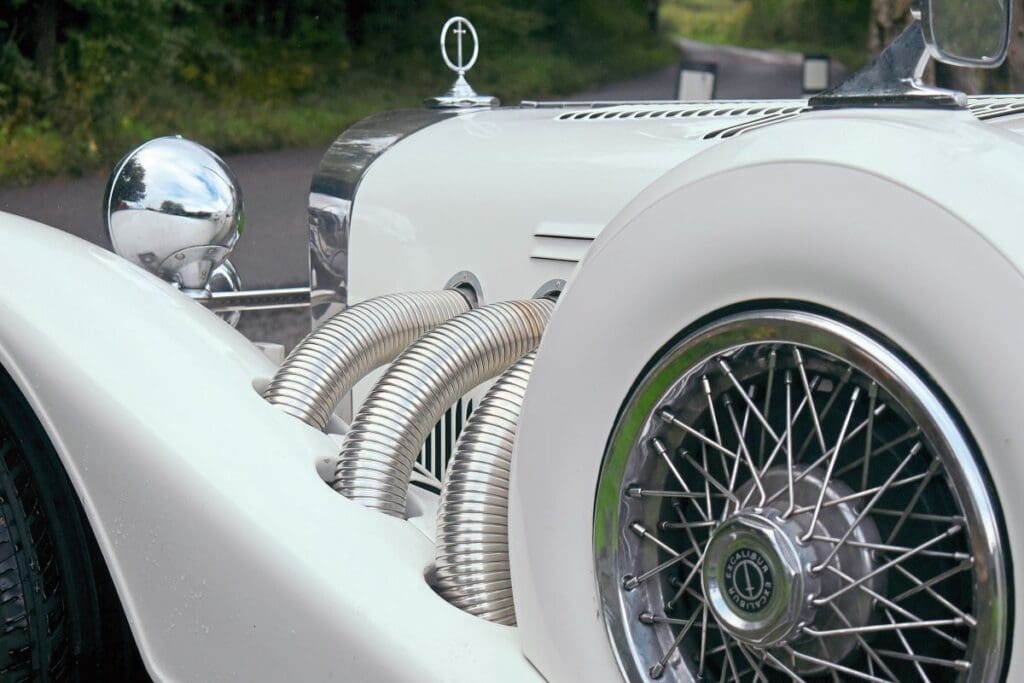
SS Automobiles was established in August 1964. In 1966 the company was re-formed as the Excalibur Automobile Corporation, and the original SSK model was joined by the SS Roadster – similar, but with full-length wings and running boards – and the four-seat SS Phaeton. In many respects, the cars were distinctly modern, and instead of relying on traditional coachbuilding, the bodies were simply turned out of glass fibre moulds.
The other change for 1966, with Studebaker on its last legs, was a switch to Corvette engines, and in 1970 the modified Daytona chassis was replaced by a specially designed box-section chassis, which gave rise to the Series II, and saw the SSK discontinued.
The Roadster and Phaeton were offered with independent suspension, four-wheel disc brakes and a choice of four-speed manual or Turbo Hydra-Matic transmissions. It will be noticed that, at some point in the early Seventies, Excalibur raided the Volkswagen parts bin, with the indicators and chunky rear light units having Beetle origins.
The Series III took over in 1975, little-changed except for some pandering to emissions and safety regulations with ‘shock-mounted solid aluminium bumpers’ and a detuned 454ci Chevy V8 which produced 215bhp. It soldiered on happily until 1981, when the Series IV took over with heavily restyled bodywork favouring luxury over a sporty image, and that continued until 1986, when the company suffered bankruptcy. New owners put the Series V into production, with truly ostentatious sedan and limousine versions added to the range. The curtain would eventually close on the marque in 1990.
For a car produced in such small numbers, it did well to remain in production for 25 years, but an extremely high purchase price and the lure of exclusivity kept it viable.
Series I and II SSKs and Roadsters entered the hands of numerous celebrities, including Steve McQueen, Tony Curtis, Dean Martin and Roy Orbison, but the Series IIIs were the best sellers.
Annual production only exceeded 100 cars for the first time in 1973, and thenceforth Phaetons would massively outsell Roadsters, though they were equally priced. Speaking of price, it rose drastically ever year, typically by about $2000 during the late Seventies. Joe’s car was one of 222 Phaetons produced during 1977, when the price was $23,600. Over at Cadillac, an Eldorado was $11,187 and a range-topping Fleetwood limousine $19,014. Excaliburs reached the peak of their popularity in 1979, with 367 sold in both styles.
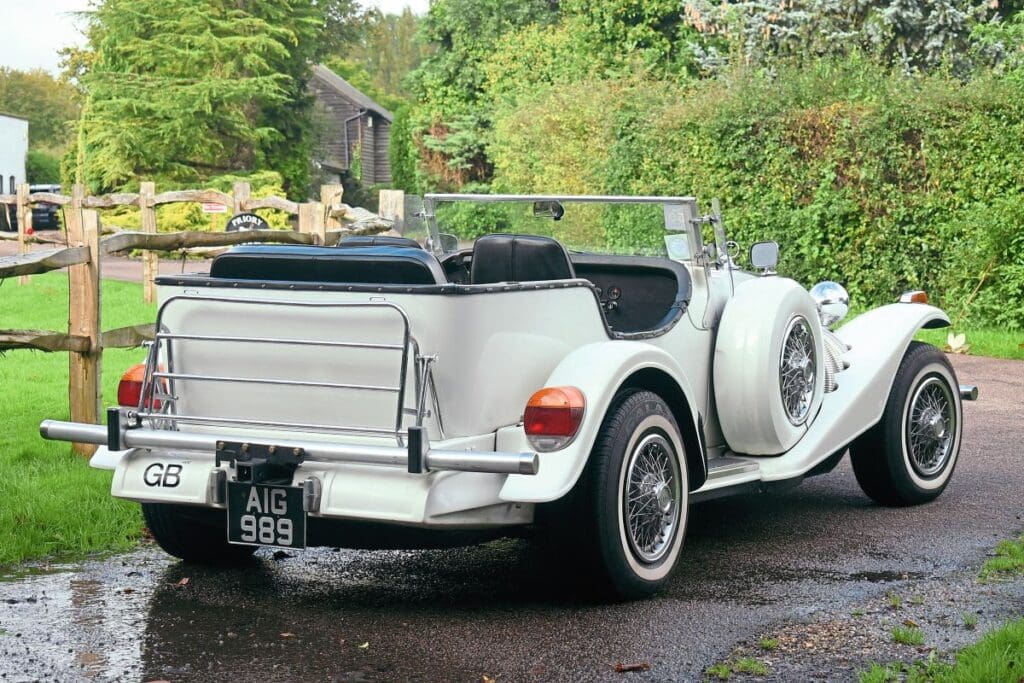
The Excalibur always has been a love-it-or-hate-it car. Owners of genuine vintage cars are not always amused, and there are others who see it as a symbol of kitsch. For Joe, it was not a case of love at first sight so, we might ask, exactly how did he become its proud owner?
He grew up in 1940s Edinburgh and life from the earliest days of childhood revolved round aviation. “I’m an aircraft engineer by trade and have been basically since I was a boy,” he says. “My father was a licensed engineer before the war and he set up flying schools in Edinburgh. My interest has always been in aviation.”
That explains why his first vintage vehicle project was the restoration of a 1948 Taylorcraft Auster, a military observation aircraft of a type used during the war. He rebuilt it in his garage at home and still flies it. He can also tell many an interesting tale about his time spent with a Hawker Hunter squadron in Yorkshire when the Cold War was at its height, but for all his preoccupation with aircraft, he has had some sympathy for vintage cars ever since buying his first car at 18. “It was a 1939 1½-litre SS Jaguar drophead coupe. I paid £50 for it, but I had to sell it when I was posted to Singapore in the Sixties.”
The SS was followed by the usual run of British family cars – Sunbeam Rapier, Ford Zephyr, Wolseley 6/80, Morris Minor Traveller and so on – but there were never any plans to get back into old car ownership. Then, suddenly, the Excalibur appeared on his driveway. “My wife died two years ago and my son Alan decided I needed a project and went and bought the Excalibur on an auction site and said: ‘There’s a project for you.’
“I didn’t know anything about it until he arrived on my drive in it. ‘What the hell is that?’ was my initial reaction.”
Alan corroborates the story, repeating some of the uncomplimentary phrases Joe directed at the car, prior to Alan explaining that it was, in fact, a present. After the shock had worn off, Joe’s attitude softened and he soon disappeared into his garage to take a closer look at the epitome of 1970s American glamour. Before long, Alan interjects, Joe was in the garage all the time, just tinkering, not that the Excalibur really needed any attention.
The Excalibur really has been well cared for and its history file suggests that Joe is only the third owner from new. Chassis 776779 was originally finished in General Motors white with a black interior and sent to Italy, to be sold through the dealership of SEA Automobili in Rome. By 1989, it was in Abu Dhabi, and in the process of being sold to its previous owner, Alastair Ian Grant, coincidentally also a Scottish aviator. The late Mr Grant returned to Inverness with the Excalibur in 1991, where it was registered OAS 255R before his personalised plate was applied for, and he retired later in life to live in Rye, on the Sussex coast. He kept the Excalibur until his death in 2022, after which Alan saw it advertised online.
Fortunately, Grant recorded how he’d come to own the car, and who the previous owner was – none other than Sheikh Hamad bin Hamdan Al Nahyan, who is said to have bought it new. While working in the UAE, Grant taught him to fly and, having seen the Excalibur in his car collection and hankered after it for seven years, requested it as payment for his services.
It is worth saying more on Sheikh Hamad, known as the Rainbow Sheikh on account of his occasional propensity for multicoloured cars. The Arab royal has collected hundreds of cars, notable among which is a replica of a Dodge Power Wagon scaled up to the size of a house. He has accumulated many bespoke vehicles in his time, and the Excalibur was typical of his tastes, as he has in recent years commissioned no fewer than three SUVs with neo-classic details, all of them the size of lorries. Judge them as you will, but the majority of his collection is comprised of more normal cars, with a particular focus on American classics, off-roaders and Mercedes-Benz. Indeed, in 2020 he was awarded the Guinness World Record for the largest collection of 4x4s – they alone are said to have accounted for 718 of the cars in his collection. The curious reader may satisfy any further questions by flying to the UAE, where many are on display in the Emirates National Auto Museum.
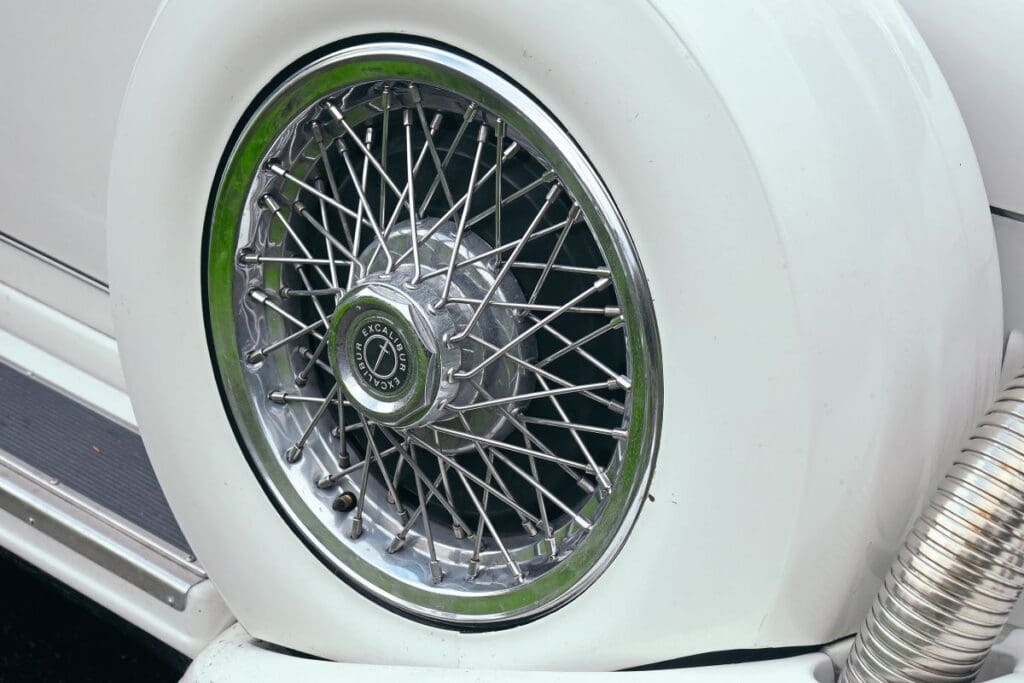
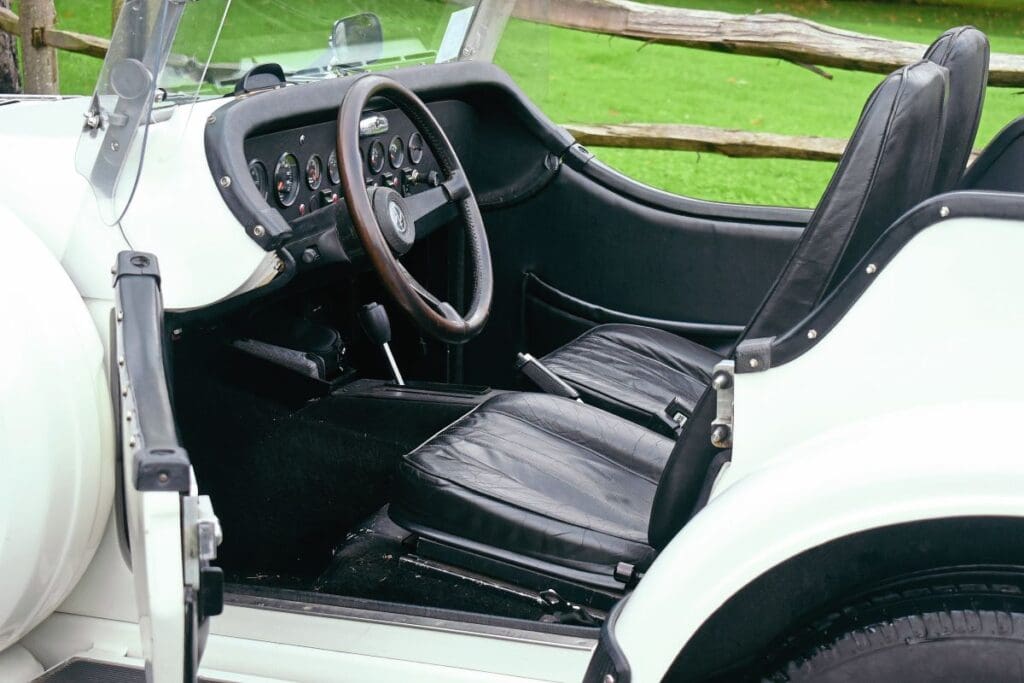
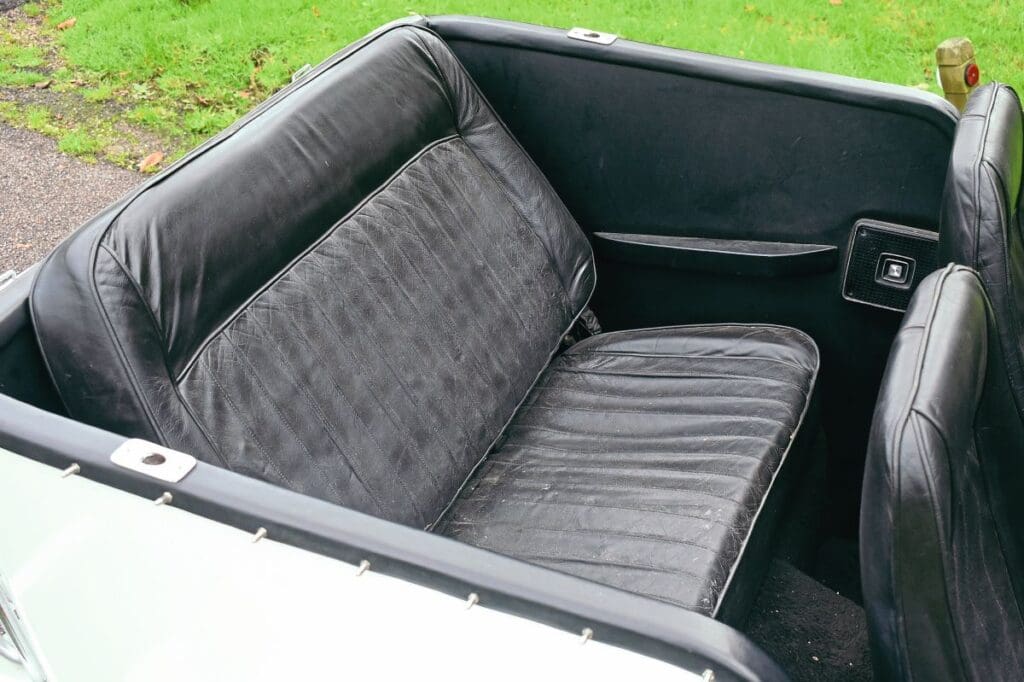
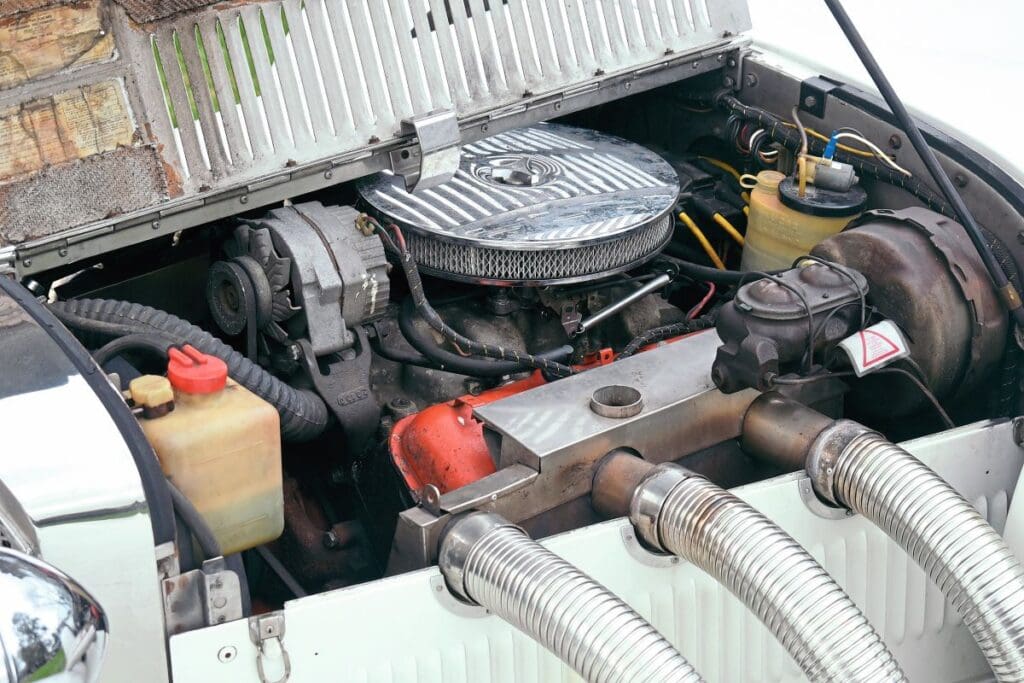
When Grant bought the Excalibur, the odometer showed just 3680km (2287 miles), the car having spent most of its life on static display in the sheikh’s private showroom. Numerous invoices show that Grant cherished the car, which accounts for its excellent state of preservation when Joe and Alan acquired it.
I have asked myself before now if I would own an Excalibur. As a cultural artefact they are fascinating, but could I enjoy it with all the stigma of ostentation that many people would attach? After a drive with Joe, I realise it’s a question of attitude. To own one as a substitute for a genuine vintage car would obviously be foolish, and to own one as a show of wealth would be crass; but own one for the sake of fun and you’ve got exactly the right idea.
With the roof off and the sides exposed – the Phaeton was provided with both a soft-top and a hardtop – open-air motoring for four is a joy. There is nothing practical about it and it can’t really be called luxurious, but at heart the Excalibur is all about the pleasure of motoring and, thus stripped of pretension, what once looked kitschy becomes simply characterful. It’s comparable to a Mini Moke or beach buggy, but with the advantage of a lusty Corvette motor. For so many reasons, it’s an extremely appealing car.
Joe, after two years, is every bit a convert. “I do like it a lot. It’s a very nice car to drive, and it’s a crowd-pleaser. It’s got quite firm suspension, which is good. It’s what the car needs, as it’s quite heavy. It has been a very good, reliable runner. It holds the road well, accelerates well and the steering’s positive. It’s got no quirks other than that the steering’s so positive, you can exceed the speed limit without trying.”
With three other cars in use as well, the Excalibur tends to come out about 20 times a year, sometimes for shows and sometimes just for local journeys. “It never actually turned into a project car because it’s been so good,” says Alan, who makes sure he gets regular turns behind the wheel, too. Since they both found the Excalibur so much to their liking, Alan bought the next car that caught his eye, a replica of an Auburn 851 Speedster by Speedster Motorcars of Florida, and since then they have satisfied their itch for cars of real antiquity by buying first a 1928 Durant tourer and then a 1916 Cadillac Type 53 seven-seat tourer, one of the first Cadillacs produced with a V8.
All cars are in use, faithfully maintained by Joe. And might there be more to come? “Oh, yes,” says Alan, beaming. “If something comes up, we’ll find space for it…”
